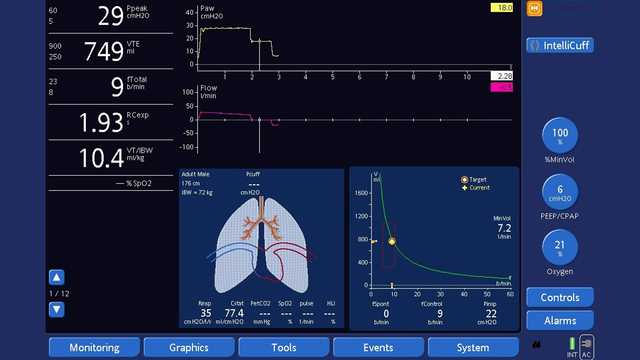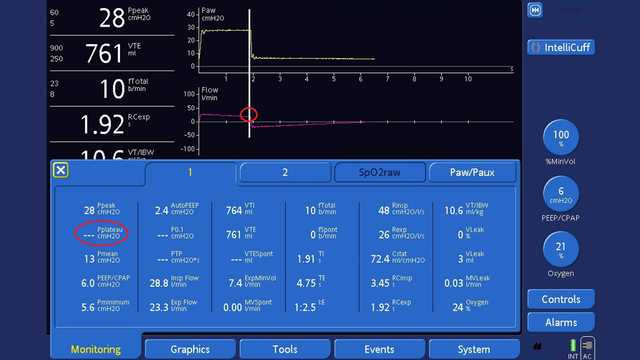
Author: Clinical Experts Group, Hamilton Medical
Date of first publication: 08.09.2020
Last change: 28.08.2020
(Originally published 14.07.2017) Steps 5-7 of performing insp hold maneuver altered (when flow reaches zero deleted). SW versions updated.A situation may occur where measured peak pressure (Ppeak) and plateau pressure (Pplateau) are the same, and the question arises as to whether this has to do with the patient or the ventilator. Measured peak airway pressure and plateau pressure can be the same in states where there is no flow occurring at the end of inspiration.

Peak airway pressure (Ppeak) is measured at the airway opening and is routinely displayed by mechanical ventilators. It represents the total pressure needed to push a volume of gas into the lung and is composed of pressures resulting from inspiratory flow resistance (resistive pressure), the elastic recoil of the lung and chest wall (elastic pressure), and the alveolar pressure present at the beginning of the breath
Plateau pressure (Pplateau) is the pressure value that is maintained constant during a portion of the inspiratory phase of the breath during no flow. No flow means there is no more resistive pressure to overcome, therefore plateau pressure equals alveolar pressure.

Parameter (unit): Pplateau (cmH2O)
Monitoring window: Monitoring 1
Definition: Plateau or end-inspiratory pressure. The pressure measured at the end of inspiration when flow is or is close to zero.
Pplateau is a rough representation of alveolar pressure.
As shown by Mojoli in 2015 (
To perform an inspiratory hold maneuver:
Relevant devices (

